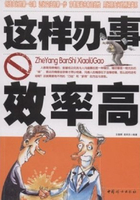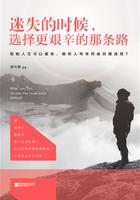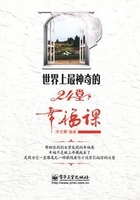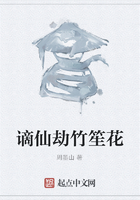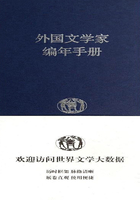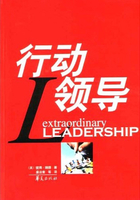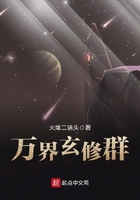If we can find approaches that meet the needs of the poor in ways that generate profits for business and votes for politicians, we will have found asustainable way to reduce inequity in the world. This task is open-ended. It can never be finished. But a conscious effort to answer this challenge will change the world.
I am optimistic that we can do this, but I talk to skeptics who claim there is no hope. They say:“Inequity has been with us since the beginning, and will be with us till the end-because people just ... don’t ... care.”I completely disagree.
I believe we have more caring than we know what to do with.
All of us here in this Yard, at one time or another, have seen human tragedies that broke our hearts, and yet we did nothing-not because we didn‘t care, but because we didn’t know what to do. If we had known how to help, we would have acted.
The barrier to change is not too little caring; it is too much complexity.
To turn caring into action, we need to see a problem, see a solution, and see the impact. But complexity blocks all three steps.
Even with the advent of the Internet and 24-hour news, it is still a complex enterprise to get people to truly see the problems. When an airplane crashes, officials immediately call a press conference. They promise to investigate, determine the cause, and prevent similar crashes in the future.
But if the officials were brutally honest, they would say:“Of all the people in the world who died today from preventable causes, one half of one percent of them were on this plane. We‘re determined to do everything possible to solve the problem that took the lives of the one half of one percent.”
The bigger problem is not the plane crash, but the millions of preventable deaths.
We don’t read much about these deaths. The media covers what‘s new- and millions of people dying is nothing new. So it stays in the background, where it’s easier to ignore. But even when we do see it or read about it, it‘sdifficult to keep our eyes on the problem. It’s hard to look at suffering if the situation is so complex that we don‘t know how to help. And so we look away.
If we can really see a problem, which is the first step, we come to the second step: cutting through the complexity to find a solution.
Finding solutions is essential if we want to make the most of our caring. If we have clear and proven answers anytime an organization or individual asks“How can I help?”then we can get action-and we can make sure that none of the caring in the world is wasted. But complexity makes it hard to mark a path of action for everyone who cares-and that makes it hard for their caring to matter.
Cutting through complexity to find a solution runs through four predictable stages: determine a goal, find the highest-leverage approach, discover the ideal technology for that approach, and in the meantime, make the smartest application of the technology that you already have-whether it’s something sophisticated, like a drug, or something simpler, like a bed net.
The AIDS epidemic offers an example. The broad goal, of course, is to end the disease. The highest-leverage approach is prevention. The ideal technology would be a vaccine that gives lifetime immunity with a single dose. So governments, drug companies, and foundations fund vaccine research. But their work is likely to take more than a decade, so in the meantime, we have to work with what we have in hand-and the best prevention approach we have now is getting people to avoid risky behaviour.
Pursuing that goal starts the four-step cycle again. This is the pattern. The crucial thing is to never stop thinking and working-and never do what we did with malaria and tuberculosis in the 20th century-which is to surrender to complexity and quit.
The final step-after seeing the problem and finding an approach-is to measure the impact of your work and share your successes and failures so thatothers learn from your efforts.
You have to have the statistics, of course. You have to be able to show that a program is vaccinating millions more children. You have to be able to show a decline in the number of children dying from these diseases. This is essential not just to improve the program, but also to help draw more investment from business and government.
But if you want to inspire people to participate, you have to show more than numbers; you have to convey the human impact of the work-so people can feel what saving a life means to the families affected.
I remember going to Davos some years back and sitting on a global health panel that was discussing ways to save millions of lives. Millions! Think of the thrill of saving just one person‘s life-then multiply that by millions. ... Yet this was the most boring panel I’ve ever been on-ever. So boring even I couldn‘t bear it.
What made that experience especially striking was that I had just come from an event where we were introducing version 13 of some piece of software, and we had people jumping and shouting with excitement. I love getting people excited about software-but why can’t we generate even more excitement for saving lives?
You can‘t get people excited unless you can help them see and feel the impact. And how you do that-is a complex question.
Still, I’m optimistic. Yes, inequity has been with us forever, but the new tools we have to cut through complexity have not been with us forever. They are new-they can help us make the most of our caring- and that‘s why the future can be different from the past.
The defining and ongoing innovations of this age-biotechnology, the computer, the Internet-give us a chance we’ve never had before to end extreme poverty and end death from preventable disease.
Thirty years ago, George Marshall came to this commencement and announced a plan to assist the nations of post-war Europe. He said: “I think one difficulty is that the problem is one of such enormous complexity that the very mass of facts presented to the public by press and radio make it exceedingly difficult for the man in the street to reach a clear appraisement of the situation. It is virtually impossible at this distance to grasp at all the real significance of the situation.”

